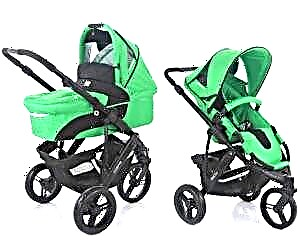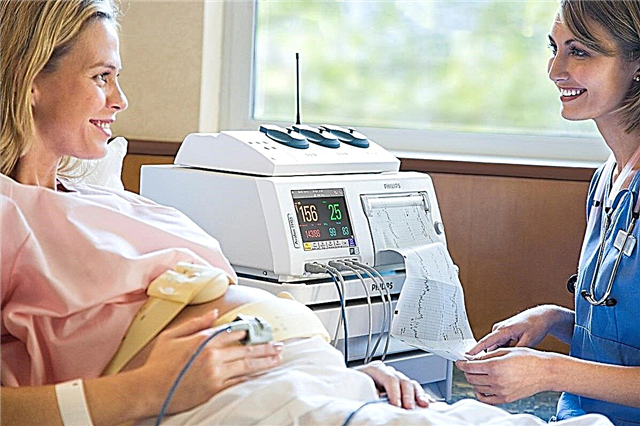
Chickenpox is a highly contagious infection in children, so contact with a sick child in most preschool or primary school children leads to infection. To understand when to expect the first signs of infection, parents should know how many days the incubation period lasts for chickenpox.

What it is
The incubation period is the period during which the virus develops in the child's body, but there are no symptoms of infection yet. It starts from the moment of infection and ends with the onset of the first signs of the disease. Knowing the length of the incubation period is important in order to understand when to expect the first manifestations of chickenpox. Also, such information is taken into account for quarantine measures.

How do you get chickenpox?
The causative agent of chickenpox is the Varicella Zoster virus, which is a representative of the herpes virus group. It is transmitted to healthy children who have not had chickenpox before from a sick child or from an adult with shingles, since this disease has the same pathogen. Most often, the disease is diagnosed in autumn and spring, when the body's defenses decrease. Every few years, doctors report an epidemic of such an infection.

Contagiousness
If the Varicella Zoster virus develops in a child's body, the baby becomes infectious to other people at the end of the incubation period. He begins to secrete the virus a day before the first symptoms of chickenpox. A sick child is contagious during the entire period of the rash and for some time after the last bubbles have appeared on his skin (5 days).
Ways and means of transmission of the virus
Basically, the Varicella Zoster virus is transmitted from a baby with chickenpox to healthy children by airborne droplets. With this method of transmission, the pathogen gets to other people through particles of saliva and mucus from the membranes of the respiratory tract. The probability of infection when communicating with a sick child for people without immunity is 90%.
In addition, the child can become infected:
- By contact - if a virus from bursting vesicles on the body of a sick baby gets into the body of a healthy child.
- In utero - from sick chickenpox during the gestation of the mother. When a woman becomes infected in the first trimester, the risk of severe developmental pathologies increases, and chickenpox in a pregnant woman for a period of more than 12 weeks leads to the manifestation of infection in the baby after birth.

Is it transmitted through things and objects
Transmission of the Varicella Zoster virus through different objects is possible, but this happens extremely rarely, since the pathogen of chickenpox is considered unstable. Outside the human body, it dies quickly enough - in 10-15 minutes. In addition, high temperature, ultraviolet light and any disinfectant solutions help to eliminate viruses that have settled on objects. At the same time, if the virus from the bursting bubbles gets on clothes, and a person who has not been sick before immediately puts them on, infection is possible.
How it is distributed and how is it transmitted through third parties
The pathogen is highly volatile and can spread through the air up to 20 meters. Through third parties, the Varicella Zoster virus is practically not transmitted, which is due to its low resistance in the external environment.

Who gets sick more often
Most often, chickenpox is diagnosed in a child of preschool and early school age (2-7 years), when children are in more contact with other children. The maximum susceptibility to the Varicella Zoster virus is noted at 4-5 years. In this case, the infection occurs at a different age.
In infants, the first months of life, chickenpox practically does not happen, since an infant under 6 months of age is protected by the mother's antibodies, which he receives from her body even in utero (provided that the mother had chickenpox in childhood). Children who are already six months old are less protected from viruses, so they have chickenpox, but often it is mild.

In children over 10 years old, chickenpox is characterized by a more severe course and the risk of complications. In a teenager and an adult, such an infection causes a strong rise in temperature, an abundant rash, and severe intoxication. It can also occur in an atypical form, for example, hemorrhagic, when the vesicles on the skin fill with blood, or bullous, when there is pus inside the vesicles.

What happens in the child's body during the incubation period
There are such stages of the incubation period of chickenpox:
- Elementary. The Varicella Zoster virus enters the mucous membrane of the child's respiratory tract and begins to develop in its cells, adapting in the baby's body.
- Development stage. The pathogen actively multiplies in the mucous membranes and accumulates in the infected cells.
- Final. The virus overcomes the protective barrier of the respiratory tract and enters the bloodstream, which causes the onset of clinical manifestations of chickenpox and the production of antibodies.

Duration of the incubation period
With chickenpox, the incubation period for most children ranges from 13 to 17 days. Most often, the duration of such a period in childhood is 14 days. At the same time, depending on the state of the child's immunity and other factors, this period can either lengthen or shorten.
If the child is weakened, the first manifestations of chickenpox occur earlier. Also, a more rapid development of the virus is observed in infants. The minimum incubation period is 7 days. In adolescents, chickenpox may appear 10-21 days after exposure to the virus. In rare cases, the incubation period is increased to 23 days.

The first symptoms of chickenpox
In a child who has contracted chickenpox, the first signs of the disease will be the symptoms of general malaise that occur with most viral infections. These are headaches, muscle aches, weakness, loss of appetite, moods and restless behavior, sore throat, lethargy, and others. Soon, parents notice more typical symptoms of chickenpox - a sharp increase in body temperature and a rash on the skin.
Rashes with this infection are first represented by pink-red small spots, which soon turn into papules (they look like a mosquito bite), and then into unicameral vesicles called vesicles. When the bubbles burst, a crust forms in their place. As a rule, the rash is itchy and itchy enough.

While some vesicles are healing, new spots often appear next to the baby's body, turning into papules and vesicles. At the same time, an increase in body temperature is noted. Thus, different elements can be seen on one part of the body.
The first rashes in most children are detected on the skin of the trunk, but soon the rash covers the limbs (except for the palms and feet) and the head area. In some children, elements of a rash appear not only on the skin, but also in the mouth, on the eyeballs and other mucous membranes. With a mild form, the rash can be single, and repeated "waves" of the rash are not observed.

Treatment
Since there is no antiviral treatment for chickenpox, all measures are aimed at relieving the symptoms of the infection. When the temperature is high, the child should lie in bed, and paracetamol or ibuprofen will help reduce the fever. Much attention should be paid to the baby's drinking regime, which is also indicated by the well-known pediatrician Komarovsky. The child needs plenty of warm drink and gentle food.
To prevent the baby from combing the bubbles, they are recommended to be treated with drugs such as PoxKlin, Tsindol or Klamin. These remedies will relieve itching and speed up skin healing. Suitable for processing and traditional "brilliant green" or fukortsin. These drugs will protect the baby's affected skin from infection.

You can find out even more about chickenpox by watching the program of Dr. Komarovsky.



